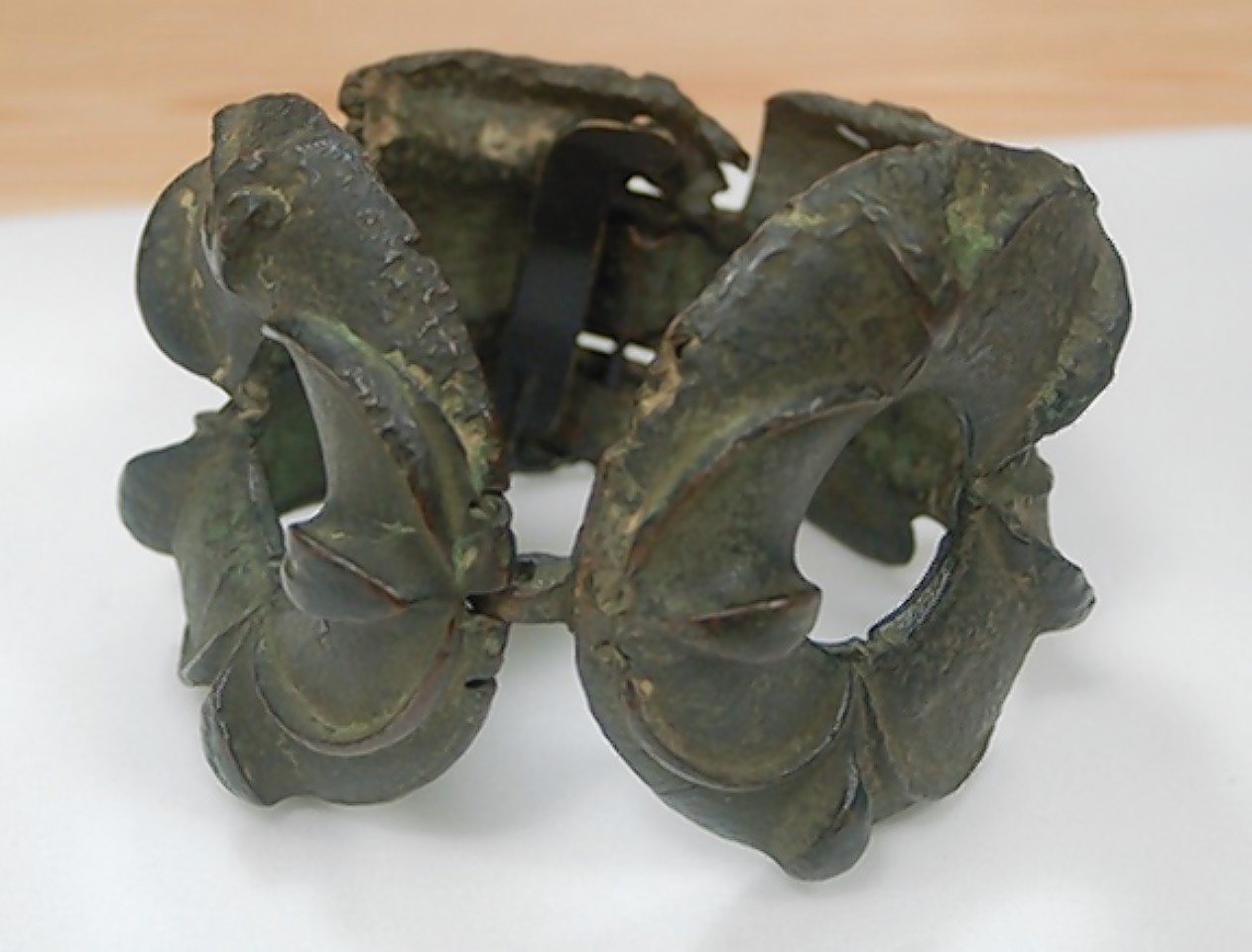A rare iron age body decoration has finally found its way back home to Shetland almost 250 years after it was found on the isle of Fetlar.
The Fetlar bronze armlet is the only one remaining of a hoard of six uncovered in 1772 near where Brough Lodge now stands.
The artefact, considered one of Shetland’s most unusual treasures, is on display at Shetland Museum and Archives in Lerwick until January 20.
The armlets would have been created around 1,700 years ago during the later iron age, when a tradition of “massive” metalwork emerged in northern Scotland.
They were heavy ornaments with enamelled settings thought to have been worn around the lower bicep as a show of strength and of the wearer’s prestige.
Such artefacts were made by the traditional technique using a wax model to form a mould from which the bronze ornament was cast.
The interesting feature of the Fetlar armlet is that the casting failed, so it was cut in two with hinges riveting the two halves together leaving a small section of the overall design missing.
It was described by the Rev George Low during his 1774 visit to Shetland as: “…six pieces of curiously cast brass were found wrapped in a raw hide, and sunk a good way below the surface. The figure of these is very singular and the workmanship fine, the relieve bold.”
This armlet came originally from the collection of Welsh natural historian and travel writer Thomas Pennant who toured Scotland in 1769 and 1772.
In 1912 it ended up in Cambridge University’s Museum of Archaeology and Anthropology as part of the Pennant collection.
As part of the exhibition there will be a display on the science of bronze casting and a lecture on December 4 about the history around such ornaments.
